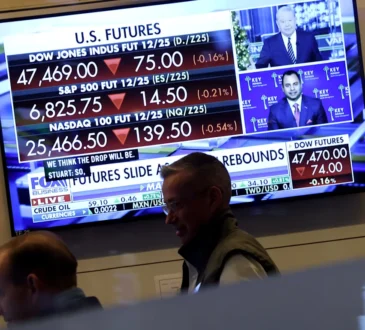U.S. stocks extended their retreat into Thursday afternoon trading, while Treasury yields moved and the dollar resumed its recent slump, as global markets continued to react to the dramatic tariff U-turn unveiled yesterday by President Donald Trump.
Updated at 2:27 PM EDT
Gold roared back to a fresh record high in late-morning trading, with spot prices rising 2.72% to $3,171.49 per ounce, taking the bullion’s year-to-date advance to around 20%. Spot prices were last marked at around $3,164.50 per ounce.
The moves suggest investors are shunning the U.S. dollar as a safe-haven trade amid the ongoing tariff chaos, with the greenback no on track for its biggest one-day decline in 10 years against the Swiss franc and the dollar index at the lowest levels since late September.
Updated at 1:10 PM EDT
The Treasury sold $22 billion in new 30-year bonds in the last of three auctions this week that raised around $119 billion.
Demand for the paper ticked higher, with total bids topping $53.4 billion and the level of indirect bidders, comprised of mostly foreign central banks, rising by 1.5 percentage points from last month’s sale to 61.9%. Dealers held onto around 12.5% of the sale.
Benchmark 10-year note yields were last marked 2 basis points lower at 4.341%, a move that has helped stem some of the afternoon in stocks.
Updated at 12:32 PM EDT
Stocks are giving back a big chunk of yesterday’s historic rally, which saw the S&P 500 notch its biggest single-day advance since 2008, as the White House ratchets up new tariffs on China and bond markets continue to wobble in the face of slowing growth and rising inflation risks.


